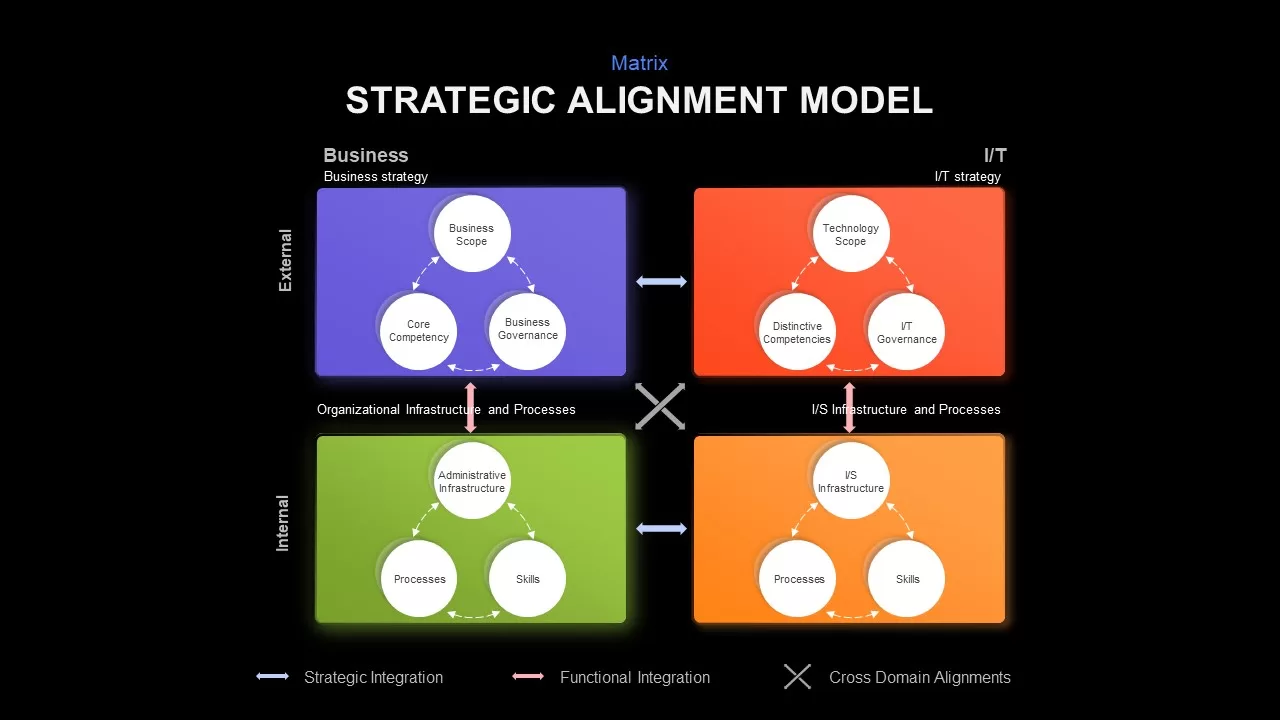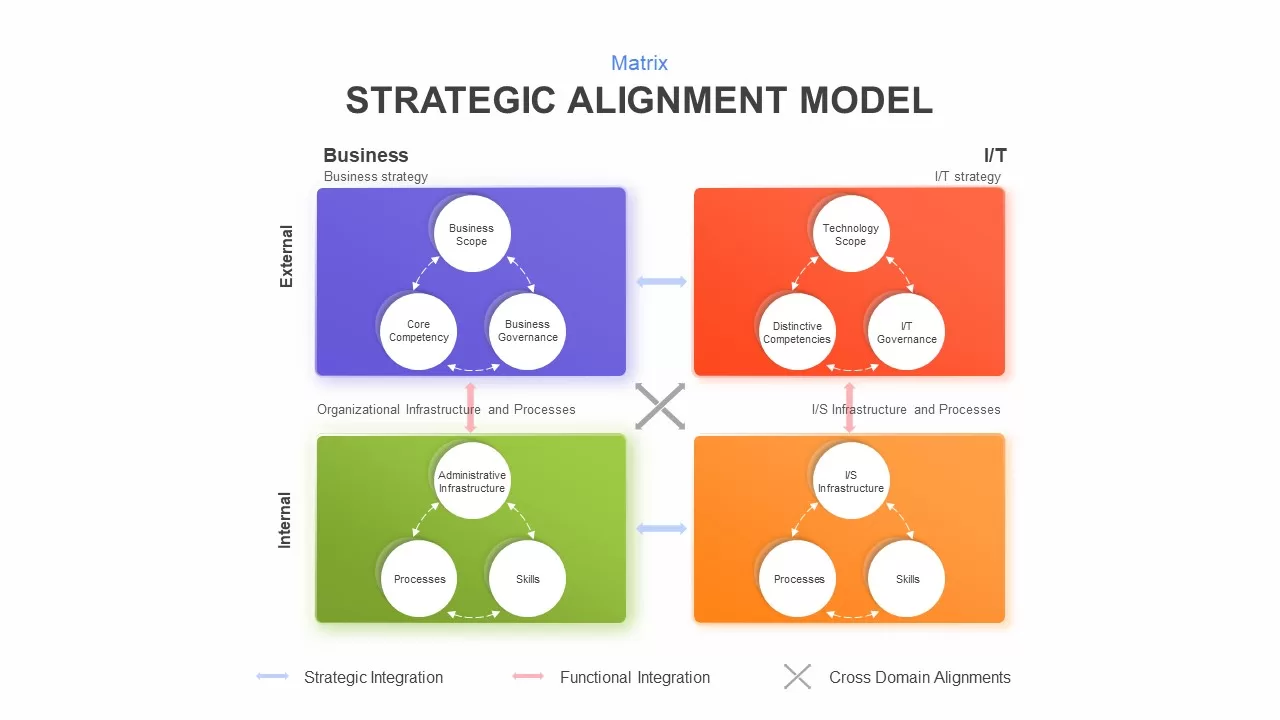strategic alignment model template


This Strategic Alignment Model template slide presents a four-quadrant matrix mapping External vs Internal and Business Strategy vs IT Strategy. Each quadrant is rendered in a distinct gradient block—purple for External Business, red for External IT, green for Internal Business, and orange for Internal IT—and houses three circular nodes that depict key elements: Business Scope, Core Competencies, Business Governance; Technology Scope, Distinctive Competencies, IT Governance; Administrative Infrastructure, Processes, Skills; and IT Infrastructure, Processes, Skills respectively. Bidirectional arrow loops within each cluster illustrate intra-domain alignment, while horizontal arrows highlight strategic integration between business and IT domains and vertical arrows denote functional integration between external and internal layers. Cross-domain alignment is emphasized with a central “X” marker. The axes are labeled with clear, gray text and dashed lines, framing the matrix for intuitive reading.
All diagram components are fully editable vector shapes, enabling quick customization of colors, gradient fills, and icons. The master slide layout includes alignment guides, snap-to-grid functionality, and smart-art placeholders for text insertion, ensuring consistent spacing and branding across presentations. Users can swap out circle labels, adjust axis titles, or recolor quadrant backgrounds in seconds to reflect their organizational context. Text placeholders support sample subtitles for each node, making it simple to replace dummy text with actual strategic themes, metrics, or objectives.
This visually balanced matrix is ideal for illustrating the Henderson-Venkatraman Strategic Alignment Model or any two-by-two framework. It streamlines complex relationships into an at-a-glance infographic, helping audiences grasp how scope, competencies, governance, infrastructure, processes, and skills interplay across business and IT domains.
Who is it for
IT directors, CIOs, business strategists, and enterprise architects can leverage this model to align business and technology strategies, clarify governance priorities, and facilitate cross-functional collaboration.
Other Uses
Beyond strategic alignment workshops, repurpose this matrix for customer segmentation, risk-assessment mapping, product-positioning frameworks, or resource-allocation models across departments.
Login to download this file

















































